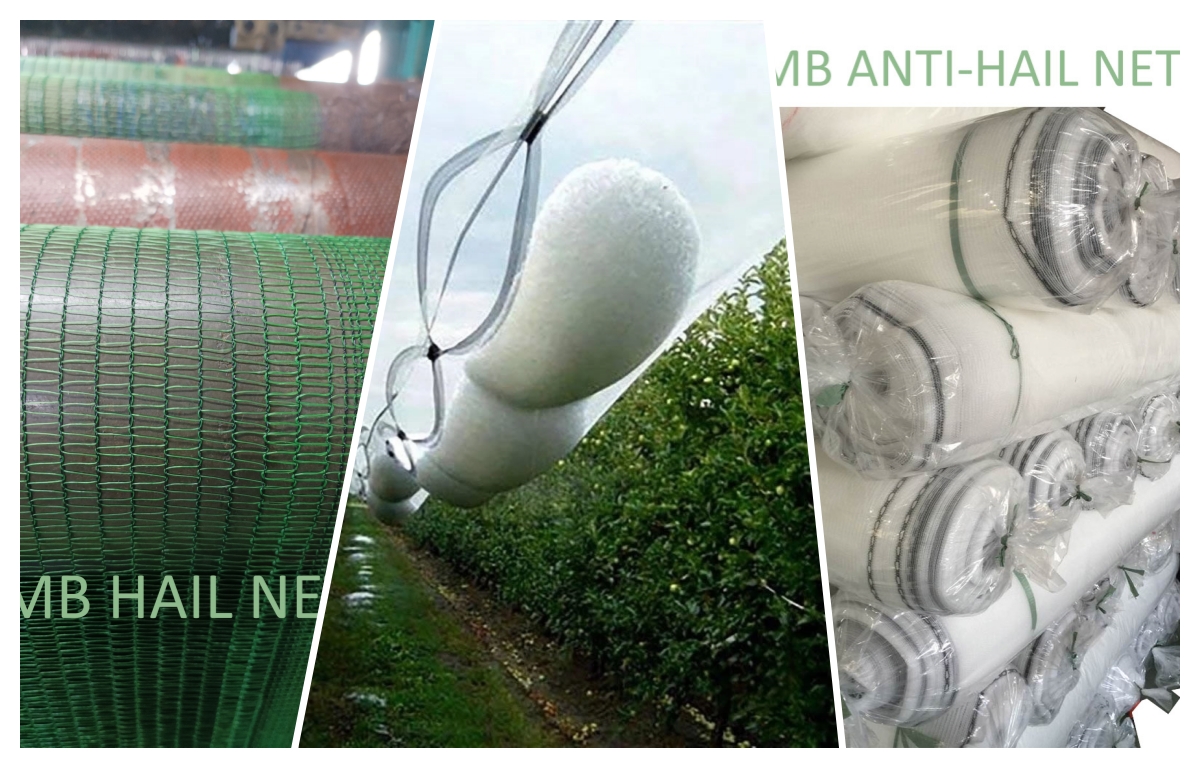
Here are some key ways anti-hail nets can protect crops:
- Physical barrier - The nets act as a physical barrier to block hailstones from hitting crops. The tightly woven material prevents hail from coming into contact with plants.
- Reduce impact damage - Anti-hail nets absorb the impact of hailstones, reducing the force at which they hit crops. This prevents bruising, injuries, and damage to fruits, vegetables, and grains.
- Maintain crop health - By protecting crops from hail damage, the nets allow plants to grow unimpeded. Crops can achieve optimal growth, leading to higher quality and yields.
- Control microclimate - Anti-hail nets provide shade and ventilation that can regulate temperature, humidity, and wind flow over crops. This creates favorable growing conditions.
- Deter pests - The netting can keep out certain birds, insects, and other agricultural pests that may feed on or damage crops.
- Reduce sun damage - The partial shade created by nets protects crops from sunburn and excessive UV radiation exposure.
- Extend growing season - By regulating the microclimate and protecting from hail, nets allow some crops to be planted earlier and harvested later in the season.
- Improve fruit quality - The nets prevent external damage and stress to fruits like grapes, berries, and orchard crops, improving size, color, and taste.
- Enhance food security - By reducing crop loss from unpredictable hailstorms, nets allow farmers to attain higher, more consistent yields.
Anti-hail nets effectively prevent hail from damaging crops through the following mechanisms:
1. Physical barrier: The tightly woven netting creates a physical barrier above the crops, intercepting and blocking hailstones from reaching the plants. The net acts as a shield, absorbing the impact and preventing direct contact between hail and crops.
2. Absorption of kinetic energy: When hailstones hit the anti-hail net, the net's material absorbs a significant portion of their kinetic energy. This absorption reduces the force with which the hailstones would otherwise strike the plants, minimizing damage.
3. Deflection and dispersion: The netting's structure causes hailstones to change direction upon impact, deflecting them away from the crops. This deflection helps to disperse the hailstones over a larger area, reducing their concentration and lessening the impact on individual plants.
4. Size selection: Anti-hail nets are designed with specific mesh sizes that are capable of blocking or reducing the passage of hailstones. The mesh allows airflow and light penetration while effectively filtering out larger hailstones, preventing them from reaching the crops.
5. Supplementary benefits: Apart from preventing hail damage, the nets may also provide additional benefits. They can create a microclimate under the netting, regulating temperature, humidity, and light intensity, which can positively influence crop growth and development. Additionally, the nets can serve as a barrier to pests and birds, preventing further damage to the crops.
By combining the physical barrier, energy absorption, deflection, mesh selection, and supplementary benefits, anti-hail nets act as a powerful defense against hail, significantly reducing the risk of hail damage to crops and ensuring their protection during severe weather events.


 英语
英语 西班牙语
西班牙语













